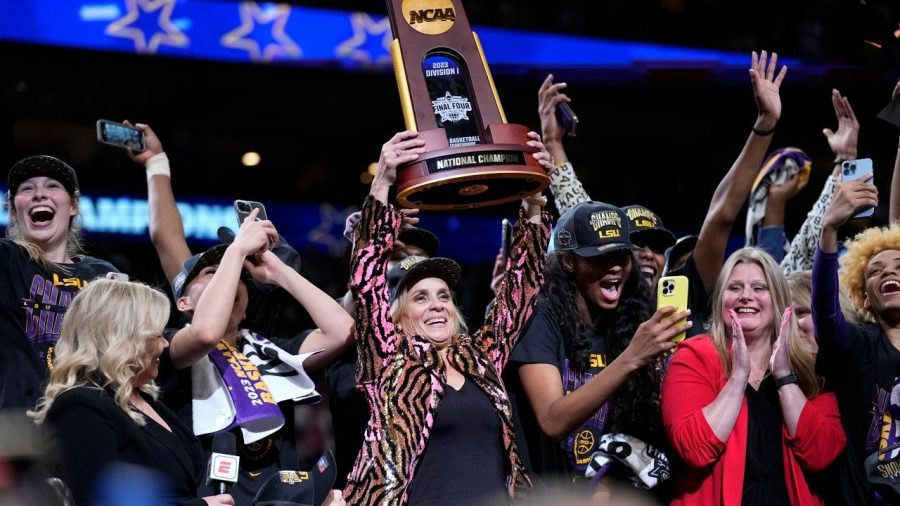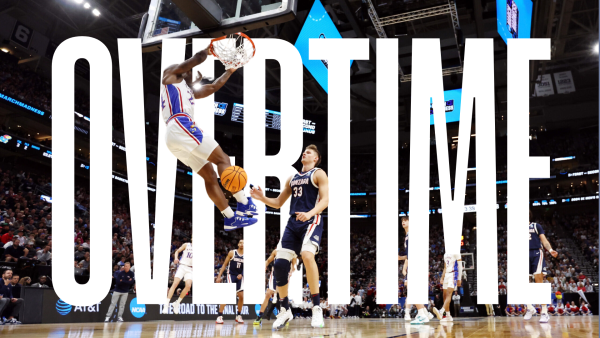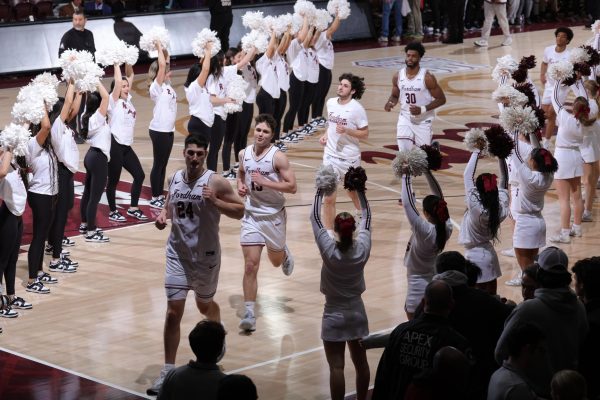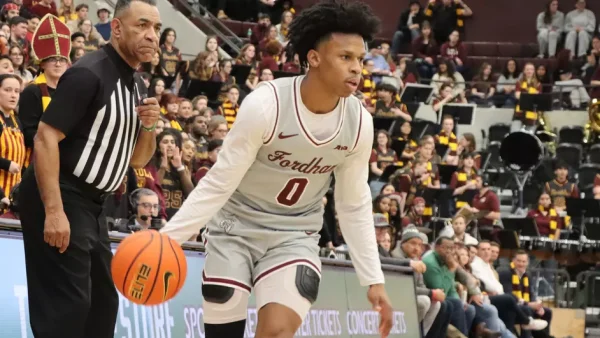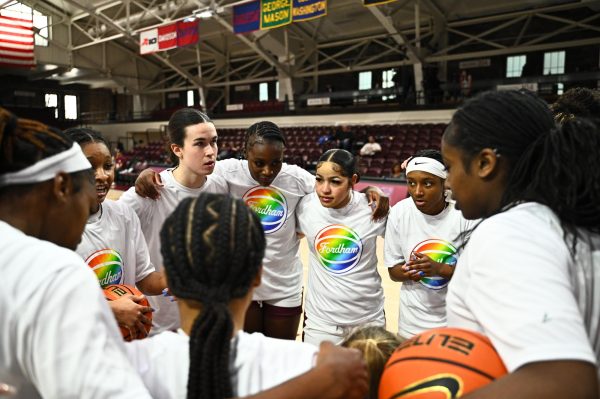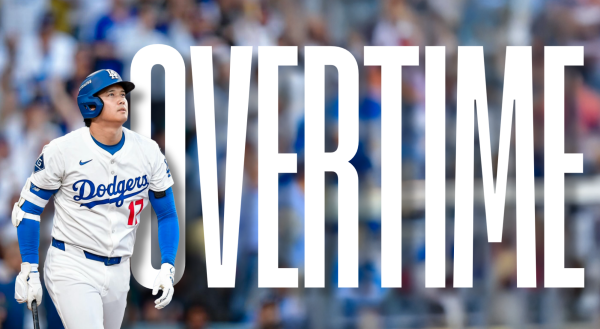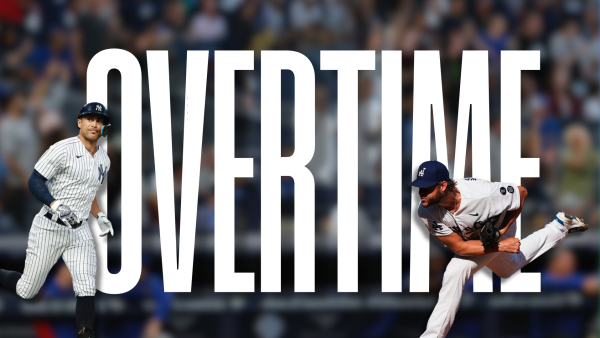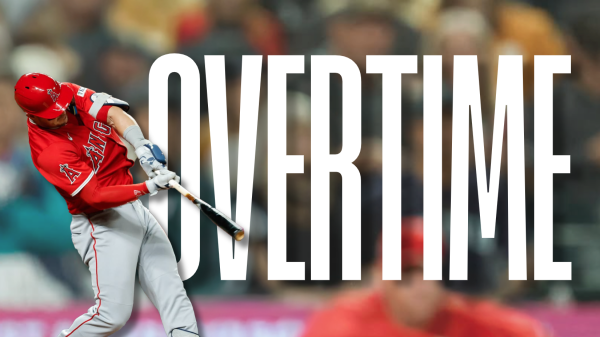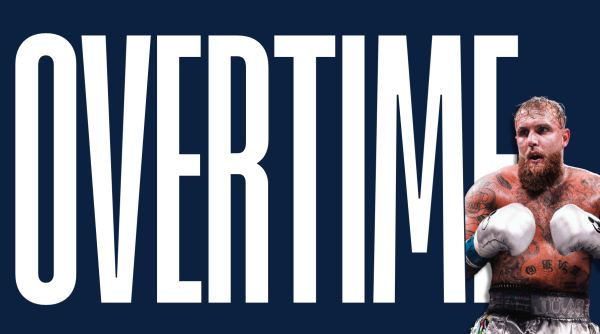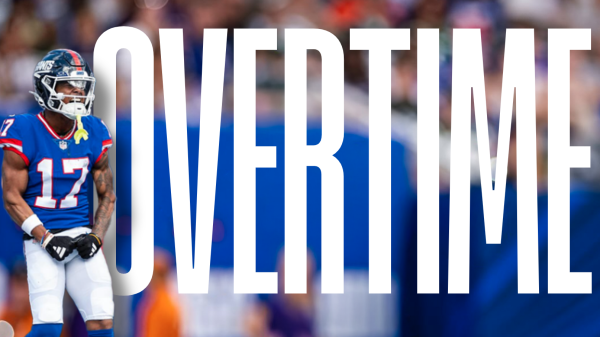Overtime: NCAA Women’s Tournament Shows Promise for Future of Women’s Basketball
There’s a lot going on in the landscape of sports at the moment. The MLB season has officially begun. The NBA and NHL are steamrolling towards playoffs. I think golf is happening. But if you weren’t locked in to the NCAA Women’s Basketball Tournament this weekend, you were doing yourself a disservice.
You also would’ve been in the minority. Friday’s semifinals matchup between the University of South Carolina and the University of Iowa drew 5.5 million viewers. That’s not just the largest audience ever for a semifinal game — it’s nearly triple the average viewership of a nationally televised regular season NBA game (1.6 million). Not to be outdone, Sunday’s championship game between Iowa and Louisiana State University drew an average of 9.9 million viewers with a peak of 12.6 million. It was the most-watched sporting event of the weekend. It was the most viewed NCAA D1 women’s basketball game of all time. It was the most viewed event ever on ESPN+. And most importantly, it’s a massive indication that women’s basketball is trending in the right direction.
Women’s basketball has had a long struggle for viewership, one that is very much still ongoing. If we take a look at the WNBA, their national telecasts averaged 205,000 viewers on ESPN in 2022. That number was actually a 16% decrease from the previous year, meaning that viewership was trending downward. During the WNBA playoffs, the average audience rose to 456,000, which was actually a 22% increase from the previous season. Still, it’s a far cry from the viewership we see for playoff games in both men’s professional and collegiate basketball.
That’s a bit of a downer after the way this article started, but it’s important to frame the landscape of women’s basketball in historical context to properly do justice to this massive weekend and this tournament as a whole. Let’s focus on the collegiate landscape for a second. Last year, the NCAA women’s tournament averaged just under 200,000 viewers per game, an 11% increase. Without even factoring in the Final Four, which did record breaking numbers, the average audience for this tournament was already at 660,000, a 42% increase. Those numbers will take a gargantuan leap up even more once the Final Four games are incorporated.
Why now? Why all of a sudden has women’s D1 basketball captivated audiences on a major, national scale. It seems like there are a couple key reasons. First off, the weekend boasted two of the most enticing matchups we’ve seen in women’s collegiate basketball.
In the Final Four, we were blessed with a matchup between Iowa and South Carolina. South Carolina entered play undefeated at 36-0. They were the consensus best team in women’s basketball, an opinion supported by the NET rankings. On the other side, Iowa boasted the top scoring offense in the nation, averaging 87.8 points per game. And they were led by none other than junior guard Caitlin Clark, the Naismith Player of the Year who was second in the NCAA in scoring. More on her later.
Iowa prevailed, giving us another tantalizing matchup, this time against LSU. Both teams were top 10 in the NET rankings. But this matchup became less about the teams themselves, and more about a clashing of two superstars: Clark versus LSU’s junior forward Angel Reese. Reese, the number two ranked player in her class as a freshman, transferred to LSU after leading the University of Maryland to the Sweet 16 in her sophomore campaign. Clark’s 27.8 points per game, 7.8 rebounds per game and 8.6 assists per game against Reese’s 23.0 points per game and 15.3 rebounds per game. What more could you ask for?
In a year where no #1 seeds reached the Final Four of the men’s tournament, with the highest seed being #4 University of Connecticut, I think it certainly helped to see powerhouse teams make the Final Four. Two #1 seeds made it in: South Carolina and Virginia Tech.
The non #1 seeds were #2 Iowa and #3 LSU, both teams powerhouses in their own right and both led by captivating stars. And while the matchups may have played a factor in viewership, there’s no denying the appeal of a star.
That star was Clark. The numbers speak for themselves — Iowa drew more viewers than any other team in the women’s NCAA tournament. Clark was a headliner in two of the most watched women’s basketball games of all time. In front of a massive audience, Clark excelled. She set the record for most points and assists in a single women’s tournament. She set the record for most three-point field goals in a championship game. Against the University of Louisville in the Elite Eight, she became the first player in men’s or women’s collegiate basketball to record a 40 point triple-double, recording 41 points, 12 assists and 10 rebounds. She followed that up with another 41 points against South Carolina, becoming the first player in tournament history with consecutive 40 point games. Even in their loss to LSU in the championship, Clark recorded 30 points. Her ability to score at will was mesmerizing. Her confidence and swagger was only icing on the cake.
We love stars. Stars attract viewers. This is an oversimplification but it doesn’t make it wrong. Ask some NBA fans why they fell in love with the game. I’d bet most of the kids around my age would cite Kobe Bryant, LeBron James or Carmelo Anthony (for the New Yorkers like myself). I’m not discounting the idea of team fandom, which is no doubt a massive part of the league’s success. But so many people watch the NBA to see its stars. Whether it’s Giannis Antetokounmpo, Kevin Durant or Luka Doncic, people tune in to see the players that make them marvel, that make their jaw drop.
Women’s basketball has been searching for that star for a while. To its credit, they’ve produced plenty. Breanna Stewart won four straight championships at the collegiate level before going on to become a star in the WNBA. Whether you go the route of Diana Taurasi, Sue Bird, Maya Moore or even more recent examples like Kelsey Plum, Britney Griner and Sabrina Ionescu, women’s basketball has no shortage of players that dominated in college and went on to become stars in the WNBA. It just seems as if none of them ever truly captured the national spotlight the way Clark has.
Clark has the potential to usher in a new age of women’s basketball, one that could come with far greater national attention. Not eligible for the WNBA draft, Clark will return to Iowa for her senior campaign. Angel Reese will do the same at LSU. I’m already dreaming of a rematch next year. In my opinion, this works in the favor of the sport. Clark has already shown the makings of a star, the level of which I don’t think we’ve ever seen in women’s basketball. She has the opportunity to build on that fanbase, draw even more attention to women’s college basketball, and then bring that audience to the WNBA when she gets drafted.
Women’s basketball has been searching for stars and it certainly seems like they’re on the way. Clark and co. were able to captivate an audience.
They were able to show that women’s basketball is highly entertaining and electric, and they did so on a national level. I’m reminded of something Ryan Ruocco once learned from Sue Bird. You shouldn’t watch women’s basketball like it’s charity. You should watch it because it entertains and captivates you. After this tournament, it looks like we’re trending that way.

Lou Orlando is a junior from Brooklyn, N. Y. majoring in journalism. He joined the Ram as a freshman, writing articles for the sports section. Lou is thrilled...





































































































































































































